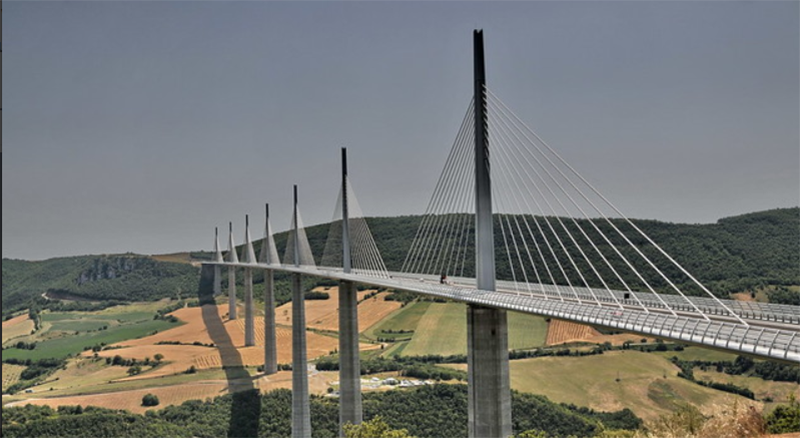Over centuries, we have seen architects and engineers leading innovation. The Romans building ingenious aqueducts, the construction of the Canal du Midi and the Eiffel Tower in France, or more recently the Norman Foster’s Millau viaduct or landmark buildings like the Guggenheim Museum in Bilbao by Frank Gehry. Buildings that inspire and stretch technological possibilities. Ideas that have literally shaped construction and design, and transformed their surroundings.
Pont du Gard, by an unknown Roman architect
If we look from that perspective, the role of the enterprise architect and enterprise architecture becomes somewhat awkward. When did you see an example of landmark enterprise architecture? When have you been inspired by your enterprise architects or EA department? Often enterprise architects focus on stability, risk reduction or cost savings. We create clear descriptions of the current situation of our organization, how it operates and how different areas of the enterprise are intertwined. Sometimes with the analysis of where improvements should be made. We hardly ever create a visionary view of the organization, its role, value, services, and how they can be realized.
“Enterprise architecture is an internal view, it is not fair to compare it with ‘real architecture’”, you might argue. This is too easy a way out. Much of architecture has to deal with the internal structure of the objects constructed. As in enterprise architecture. We should link the internal aspects of enterprise architecture to the external impact: how can we easily adopt new services, based on this architecture? How can we enable completely new interaction patterns, grow towards 24/7 services, or empower our employees to work everywhere as if they were in the office?
Garabit viaduct, by Gustave Eiffel
We, as enterprise architects, owe it to our profession and our stakeholders to stretch the possibilities of our organizations to the limits. Not to focus on restrictions or limitations, but to highlight strengths and opportunities. To do so, we need to translate and transfer the essence of the organization and its strategy into the architecture. Concepts such as business models, business blueprints and operating models are instrumental. Architects in this digital age should facilitate innovation by contributing to flexibility and scalability, learning-by-doing and experimentation.
In some ways, this requires a cultural transformation among enterprise architects. Many architects are deeply invested in describing their current-state architecture and argue that you need to know exactly where you are before you can decide where to go. This itself is a rather safe endeavor. Nothing much can go wrong if you just diligently investigate what your enterprise is, has and does. But aiming for the future is risky business: if you get it wrong, the consequences may be disastrous. This may get many of us out of our comfort zones, but enterprise architects should not just be enterprise bookkeepers.

Millau viaduct, by Norman Foster
A second cultural change is that we need to get away from the classical waterfall, ‘Big-design-up-front’ approach: first creating extensive architectures and designs, and only then starting to implement them. In an world of rapid change, this approach no longer cuts the mustard. Stakeholders cannot wait until architects come up with their extensive designs, but need to be provided with on-the-spot guidance and advice, while the architecture keeps evolving in the background. Lean and agile approaches to enterprise architecture are needed to keep pace with a volatile environment.
This leads us to a third cultural change: a focus on change itself as the constant factor. Most organizations are in a permanent process of transition. The ‘unfreeze-change-refreeze’ model, reasoning from a fixed current to a desired future state of the architecture, no longer really applies; the current state is always in flux and the future state is a moving target. We architects should concentrate on enabling and giving direction to this continuous innovation process, rather than on overly detailed designs of some desired future.
Perhaps we should invest more time and energy into this cultural change than in yet another refinement of our process architecture, system architecture or TOGAF capabilities. No, not perhaps. Start enabling innovation and transformation in your organization. Now.